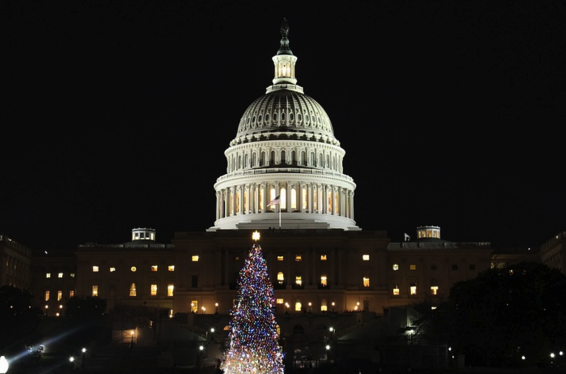Let Us Pray
Posted on January 17, 2019

Man, that ended badly.
December limped to an ugly conclusion as nearly everyone from Wall Street to Main Street took a year-end pounding not seen in three generations. Pick an investment sector (stocks, bonds, commodities); a nation state (the U.S., China, or the European Union); or a political system (a democratic republic, parliamentary, or single-party rule), and almost every one of them finished 2018 underwater, under siege, or under a cloud.
The connective tissue to all is as old and bowlegged as Father Time himself—bitter, stalemated politics. When national and international leaders fail to solve regional problems (Brexit, anyone?) or go out of their way to fuel new, global problems (cue tariffs), then investors from New York to Tokyo take their money and run.
Run where?
Out the door. Any door. Every door.
That anywhere-but-here behavior is in direct contrast to the past 10 years where the safest place to run was Wall Street. From its post-recession low of 7365 in Feb. 2009, the Dow Jones Industrial Average soared 360 percent to 26828 on Oct. 3, 2018. Since that lofty high, however, the Dow has lost one-sixth of its value mostly because difficult-but-solvable economic problems—implementation of Brexit, for example, or the year-ending U.S. budget standoff—ran smack into political hackery and demagogy.
And that’s just not the case in Washington or London, but also in Paris, Brussels, Warsaw, New Delhi, Budapest, Brasilia, Mexico City, and elsewhere.
Washington, once a beacon for freedom and free markets, now leads this parade of retreat. After using 2017 to tear up treaties, betray friendships, and shred hard-won, post-war norms, the U.S. spent most of last year confirming that it’s an erratic trader, unreliable ally, and geo-political cipher.
As such, 2019 begins with much of the world thinking America has lost its political bearing and collective marbles. It’s right.
For proof, consider where New Year’s Day found the nation.
One-fourth of the U.S government, including the Department of Agriculture, was closed for the 11th straight day over a piddling $3.5 billion, literally a microscopic grain of sand in the miles of beach that is our federal spending.
Even more incredible, the number of active investigations of alleged corruption within the Trump Administration now stands at 17. That’s a staggering total made even more so in that it occurred under a Republican-led government.
Equally worrisome, the White House is becoming an empty island: 65 percent of “all senior White House aides,” according to the Dec. 31 New York Times, “have departed” since Inauguration Day. Even more remarkable, 10 of these now-gone officials were members of the Trump Cabinet.
And for those of us whose last civics lesson was decades ago, there are 15 Cabinet posts; 16, if you include the vice president. By either measure, losing two-thirds of your departmental leaders in less than two years is historical, debilitating, and just plain nuts.
Arguably, the only numbers worse than the White House unemployment rate are numbers that detail the U.S. economy.
One year after Republicans in Congress bulled through a $1.9 trillion tax cut, their outrageous (and they knew it) prediction of five percent Gross Domestic Product (GDP) growth has given way to—and fingers crossed at that—a much more realistic estimate of two percent growth.
That downward GDP revision means their supply-side, “voodoo” tax cut, however, is certain to increase one thing: the federal deficit. Before the cut, the 2018 deficit was projected to be $500 billion. This past October—at, not coincidentally, the same time the stock market began stumbling toward its worst December since 1931—the deficit weighed in at a fat $779 billion.
The 2019 federal deficit will be even higher; current estimates place it north of $1 trillion. Worse, the overall national debt is forecast to climb by $16 trillion over the next decade, due mostly to the 2017 tax cut and increased spending pushed by the White House and Congress.
So, Happy New Year and let’s pray 2019’s rough start isn’t a precursor of the year ahead.
But don’t count on it.
© 2019 ag comm
Share This